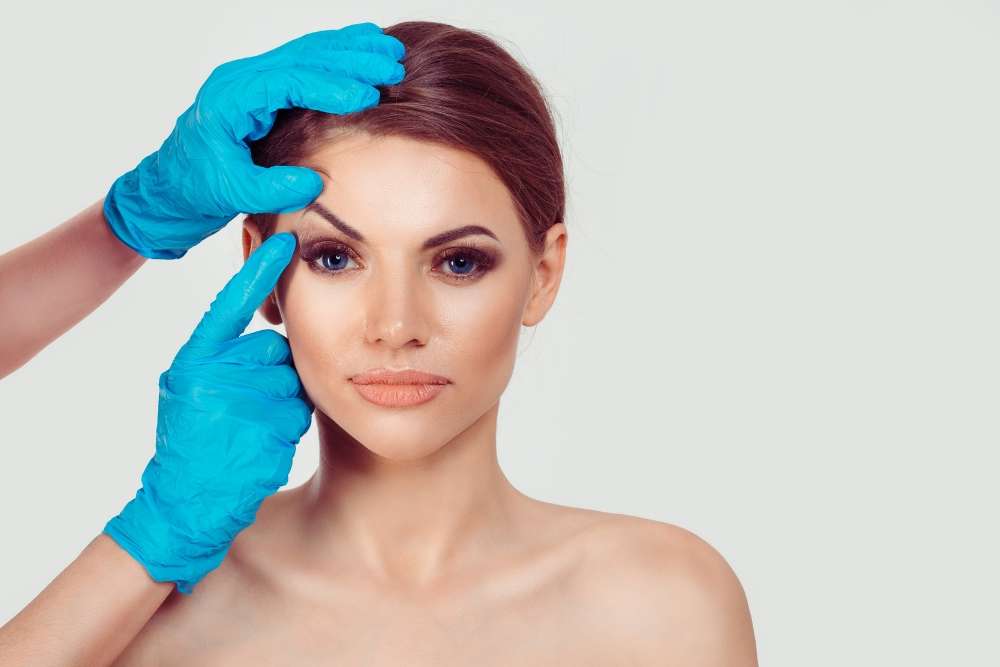Learn About Non-Surgical Nose Tip Reshaping Costs and Procedures
Non-surgical nose tip reshaping has become an increasingly popular cosmetic option for individuals seeking to refine their nasal appearance without undergoing invasive surgery. This approach utilizes injectable fillers and other minimally invasive techniques to adjust the shape, symmetry, and contour of the nose tip, offering a temporary yet effective solution with minimal downtime and reduced risk compared to traditional rhinoplasty.

For many people, the shape of their nose tip plays a significant role in facial harmony and self-confidence. While surgical rhinoplasty has long been the standard for nose reshaping, non-surgical alternatives have emerged as viable options for those seeking subtle enhancements without the commitment, cost, or recovery time associated with surgery. These procedures use dermal fillers, botulinum toxin, and other techniques to reshape the nose tip, providing immediate results with minimal disruption to daily life.
Introduction to Non-Surgical Nose Tip Reshaping
Non-surgical nose tip reshaping, often referred to as a liquid nose job or non-surgical rhinoplasty, involves the strategic injection of dermal fillers to alter the appearance of the nose tip. Unlike traditional rhinoplasty, which requires incisions, anesthesia, and weeks of recovery, non-surgical methods are performed in-office with minimal discomfort. The procedure typically takes 15 to 30 minutes, and patients can return to their normal activities almost immediately. Common goals include lifting a drooping tip, smoothing bumps, improving symmetry, and creating a more refined nasal profile. The results are temporary, lasting anywhere from six months to two years depending on the type of filler used and individual metabolism.
Non-Surgical Nose Tip Reshaping Costs
Understanding the financial commitment involved in non-surgical nose tip reshaping is essential for making an informed decision. Costs vary widely based on geographic location, provider experience, type of filler used, and the complexity of the desired changes. In the United States, the average cost for a non-surgical nose reshaping procedure ranges from $600 to $1,500 per session. High-end metropolitan areas such as New York, Los Angeles, and Miami may see prices at the upper end of this range, while smaller cities and suburban areas may offer more affordable options. Additional sessions may be required to maintain results, which should be factored into long-term budgeting.
Prices, rates, or cost estimates mentioned in this article are based on the latest available information but may change over time. Independent research is advised before making financial decisions.
Procedures of Non-Surgical Nose Tip Reshaping
The procedure begins with a consultation where the provider assesses the patient’s nasal structure, discusses goals, and determines the appropriate treatment plan. On the day of the procedure, the treatment area is cleaned and a topical numbing cream may be applied to minimize discomfort. The provider then carefully injects hyaluronic acid-based fillers, such as Juvederm or Restylane, into targeted areas around the nose tip. The filler is molded and shaped to achieve the desired contour. Some practitioners may also use botulinum toxin injections to relax muscles that pull the nose tip downward, creating a subtle lifting effect. The entire process is performed with precision to ensure natural-looking results and avoid complications such as vascular occlusion.
Pros and Cons of Getting Non-Surgical Nose Tip Reshape
Non-surgical nose tip reshaping offers several advantages, including minimal downtime, immediate visible results, reversibility with hyaluronidase if needed, and a lower risk profile compared to surgery. Patients avoid general anesthesia, incisions, and the extended recovery period associated with traditional rhinoplasty. However, there are also limitations and potential drawbacks. Results are temporary, requiring maintenance sessions every one to two years. The procedure cannot reduce the size of the nose or remove tissue, only add volume and reshape contours. There is a small risk of complications such as bruising, swelling, asymmetry, or in rare cases, vascular complications. Individuals with certain medical conditions or unrealistic expectations may not be suitable candidates.
Non-Surgical Nose Tip Reshaping Types
Several techniques fall under the umbrella of non-surgical nose tip reshaping, each suited to different aesthetic goals. Dermal filler injections are the most common method, using hyaluronic acid fillers to add volume, smooth irregularities, and lift the tip. Botulinum toxin injections can be used to relax the depressor septi nasi muscle, which pulls the nose tip downward, resulting in a subtle upward lift. Thread lifts, though less common for the nose, involve inserting dissolvable threads to provide structural support and lift. Some practitioners combine multiple techniques for comprehensive results. The choice of method depends on individual anatomy, desired outcomes, and the expertise of the provider.
| Provider/Clinic Type | Average Cost Range | Common Fillers Used | Session Duration |
|---|---|---|---|
| General Dermatology Clinics | $600 - $900 | Restylane, Juvederm | 15-30 minutes |
| Medical Spas | $700 - $1,200 | Juvederm, Belotero | 20-30 minutes |
| Plastic Surgery Practices | $1,000 - $1,500 | Restylane Lyft, Juvederm Voluma | 20-40 minutes |
| Cosmetic Injector Specialists | $800 - $1,300 | Radiesse, Restylane | 15-30 minutes |
Prices, rates, or cost estimates mentioned in this article are based on the latest available information but may change over time. Independent research is advised before making financial decisions.
Non-surgical nose tip reshaping represents a significant advancement in cosmetic enhancement, offering individuals the opportunity to refine their nasal appearance without the commitment and risks of surgery. While the procedure is not permanent and requires ongoing maintenance, many patients find the convenience, affordability, and natural-looking results to be worthwhile. As with any cosmetic procedure, thorough research, realistic expectations, and consultation with a qualified and experienced provider are essential for achieving safe and satisfying outcomes.
This article is for informational purposes only and should not be considered medical advice. Please consult a qualified healthcare professional for personalized guidance and treatment.




